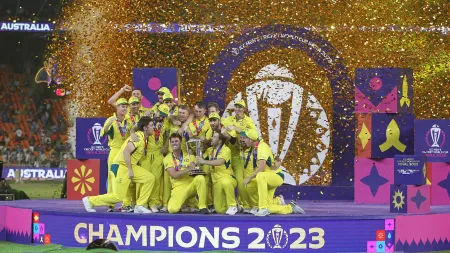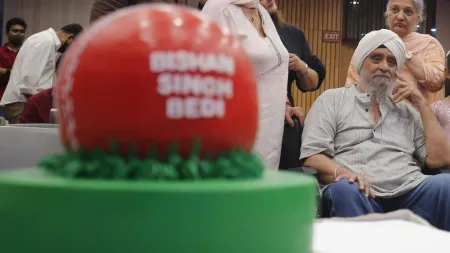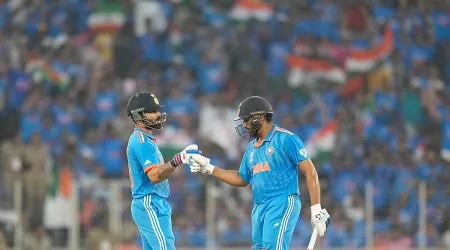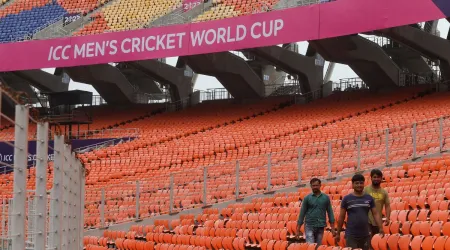- India
- International
Boot on the other foot: Retired Indian hockey players turning to coaching
Almost two dozen men and women players, who have all retired over the last decade, are going through Hockey India and International Hockey Federation’s certification process to become accredited coaches and give a fillip to the eroding grassroots structure.
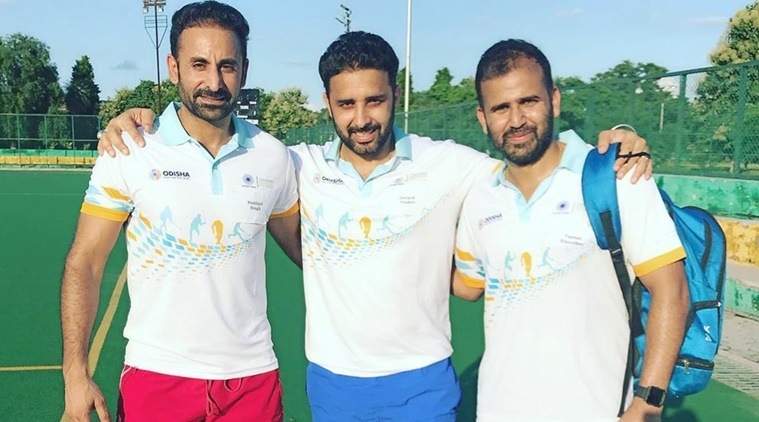 Former hockey players Prabhjot Singh, Deepak Thakur and Tushar Khandker.
Former hockey players Prabhjot Singh, Deepak Thakur and Tushar Khandker.
When Tushar Khandker began his international career in the early 2000s, dribbling the ball along the carpet was still considered one of hockey’s ultimate skills. By the time his days with the national team got over, after a 12-year career, that artistry was making way for sorcery. The dribble was quickly becoming passé and hockey, instead, was going ‘3D’. More and more players were learning to lift the ball off the turf and dribble it in the air while continuing to sprint simultaneously (the art of changing the direction of the ball mid-air creates an illusion of sorts, hence the name ‘3D’).
Today, even that has become a basic skill. “Hockey is changing every four-five years nowadays,” Khandker says. “And we have to keep adapting to all these changes.” Adapting to changes hasn’t really been India’s strength. Indian hockey has been notoriously slow in responding to almost every change that has been introduced in the game over the last five decades and watching domestic hockey is sometimes akin to indulging in time travel.
Now, Khandker and his contemporaries are trying to bring about a change. Almost two dozen men and women players, who have all retired over the last decade, are going through Hockey India and International Hockey Federation’s certification process to become accredited coaches and give a fillip to the eroding grassroots structure. The list of players wanting to turn into coaches is long: apart from Khandker, his former India teammates Deepak Thakur, Prabhjot Singh, Devesh Chauhan, Shivendra Singh, Bharat Chetri, Gurbaj Singh, Sameer Dad, Vickram Kanth and Girish Pimple are some of the players who have undertaken the course along with 2002 Commonwealth Games gold medallists Pritam Siwach, Sanggai Chanu and Helen Marry, among others.
During the lockdown, the 32 men and 23 women’s team players in the core group for the Tokyo Olympics attended a basic course online as part of Hockey India’s ambitious attempt to formalise India’s coaching pyramid. Since the process was introduced in April 2019, roughly 650 coaches have gone through the certification programme, according to Hockey India’s high-performance director David John.
“It is by design (to have recently-retired and current players into the coaching programme). The idea is to give them an early introduction to see whether they like this and then it is their choice,” John says.

Like in most other areas, India has woken up late to the concept of getting the players into coaching. In the Netherlands, for example, it is common for senior club or national team players to coach the junior teams simultaneously while playing. It is similar in Australia as well, where the players begin coaching while having an active career. Hence, it is common to see just-retired players taking up senior roles with different national teams: for instance, 34-year-old Chris Ciriello, who played for Australia at the 2016 Olympics, is currently the analytical coach of the Indian men’s team.
India men’s coach #PaulvanAss sacked by Hockey India READ http://t.co/79o7Mr8WZw #Hockey pic.twitter.com/wsTp6SA22L
— Express Sports (@IExpressSports) July 20, 2015
India, on the other hand, has made its aversion to investing in coaches obvious over the years. That Graham Reid was the 26th men’s team coach in 25 years when he was appointed in May 2019 shows the complete lack of understanding of the head coach’s role. At the same time, developing domestic coaches has never been a priority until now; a fact that many say is the reason for the national team’s relentless slide since the mid-1970s.
Getting up-to-date
Despite having produced some world-class players, one can count on fingertips the number of player-turned-coaches who have made an impact since India won its last Olympic medal in 1980 – MK Kaushik, Rajinder Singh Senior, Vasudevan Baskaran and Harendra Singh. “We all assume great players become great coaches but that’s not always the case,” John says.
While mere certification might not be the magic bullet, John says it will help create a cohesive playing style across the country, especially at the sub-junior level, and help Indian coaches get up-to-date with modern hockey’s systems and terminologies. John says the aim is to develop an overall playing philosophy that will be implemented bottom-up, and within that structure, give the domestic teams the space to maintain their own style. “Having been to four national championships, I have seen very little difference between the teams in the way they prepared and were coached… no change in patterns or style or structure in any of the teams really,” John says.
He cites rolling substitutions as an example. “In international hockey, we make 60-80 rotations in a match so the players are very familiar to be changed every 2-3 minutes whereas in domestic hockey, it’s seen as a slight if a player is made to change.”
Khandker, who was India’s assistant coach at the Rio Olympics, says the coaching programme has given him an idea about dealing with player injuries, recovery, psychological issues and man-management. There are other visible changes as well.
READ | Avengers of 1964 who reclaimed gold in last Tokyo Olympics
For instance, at the National Championships in Gwalior two years ago, Khandker, one of the coaches of the Petroleum Sports Promotion Board team, stationed himself on top of a water tank near the ground to provide tactical inputs to Devesh Chauhan, who was handling the dugout. This role – extremely critical in modern hockey as it gives a bird’s-eye view of the match – is fairly common internationally as well as club hockey elsewhere but very few domestic teams in India do it because of lack of personnel in the coaching team as well as lack of knowledge.
A lot of current coaches have a diploma from the National Institute of Sport in Patiala. “That gave an overall perspective on coaching. The current programme gives me specific insights on hockey coaching,” says Pritam Siwach.
The 2002 Commonwealth Games gold medallist has been running an academy in Sonepat and has produced several players from the region. Siwach says she has made ‘small but important changes’ to her style. “When a young child comes, I don’t give her a hockey stick. Instead, for the first few weeks, she plays football and/or relays. It takes the pressure off them and they can put to use their learnings from other sports in hockey,” she says.
Following sports other than hockey is a key element of the programme. “It’s also important they watch Pro League matches and see if other countries use patterns and systems which we aren’t using in India,” John says.
The whole purpose of the exercise, John adds, is to create a pool of Indian coaches who are well versed with the latest rules and tactics, and not necessarily to reduce India’s reliance on foreign experts. In the last decade, Harendra has been the only Indian coach to have taken charge of the national men’s team.
“Belgium is world number one and they don’t have a Belgium-born coach coaching any of their teams, men or women,” John says. “With a foreigner, you get a good viewpoint. (Legendary Australian coach) Ric Charlesworth always had a European on his coaching staff to get a perspective when they were playing a European opponent. (But) it’s important to have a good representation of Indians on coaching panels. Going forward, their positions will get senior, and that’s good for Indian hockey.”


















